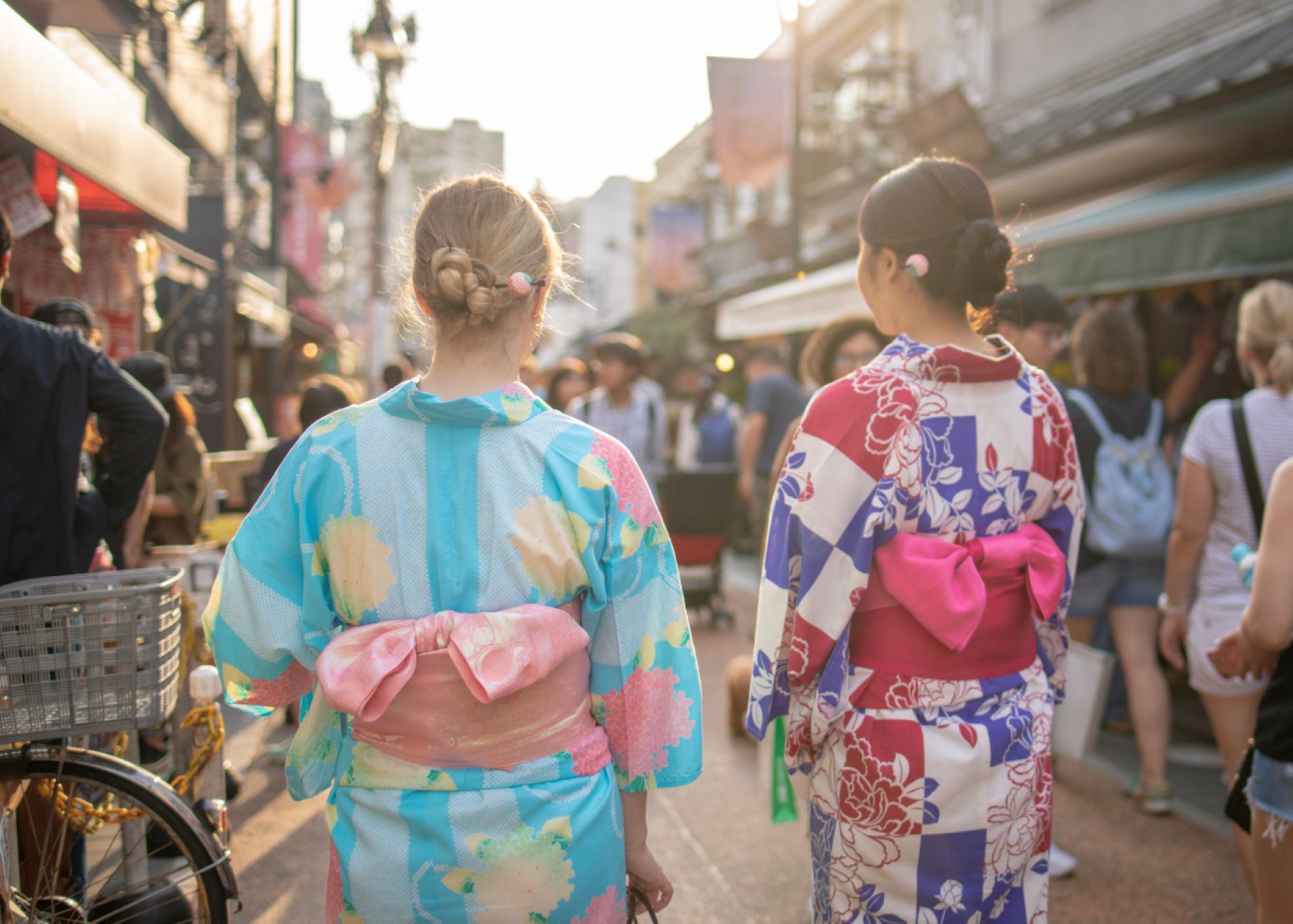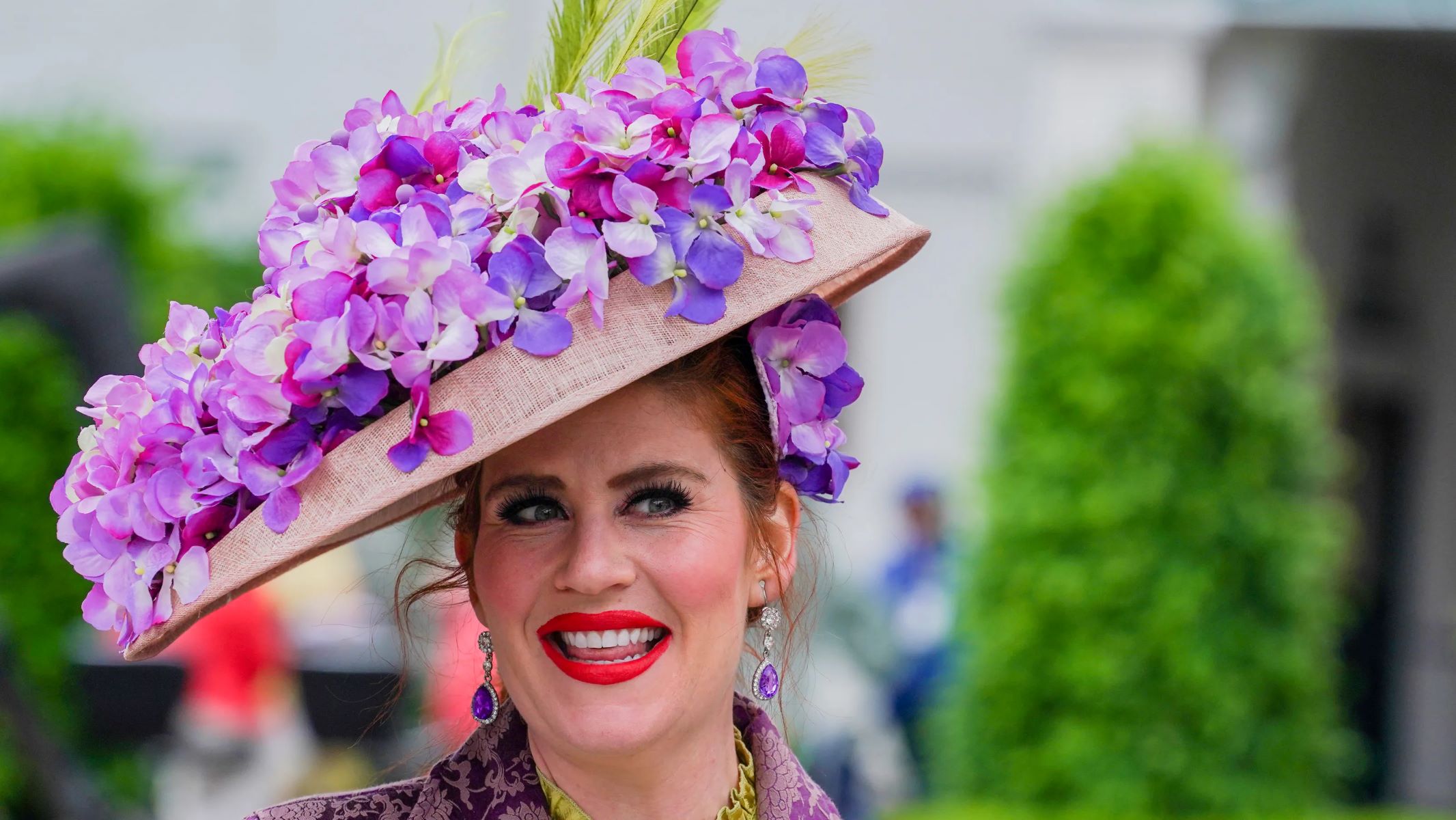Home>Arts and Culture>Unlocking The Secrets: Unveiling The Distinctive Charms Of Kimonos And Yukatas In Japanese Fashion!


Arts and Culture
Unlocking The Secrets: Unveiling The Distinctive Charms Of Kimonos And Yukatas In Japanese Fashion!
Published: February 15, 2024
Discover the exquisite allure of Japanese fashion with our exploration of kimonos and yukatas. Uncover the rich arts and culture of Japan through its distinctive traditional garments!
(Many of the links in this article redirect to a specific reviewed product. Your purchase of these products through affiliate links helps to generate commission for Regretless.com, at no extra cost. Learn more)
Table of Contents
Introduction
Welcome to the enchanting world of Japanese traditional garments, where elegance meets cultural heritage! The captivating allure of kimonos and yukatas has transcended generations, embodying the essence of Japan's rich history and artistic prowess. These iconic garments have not only stood the test of time but have also evolved to become timeless symbols of grace and sophistication.
In this immersive journey, we will unravel the captivating story behind kimonos and yukatas, exploring their historical significance, intricate designs, and enduring influence on modern fashion. From the opulent grandeur of kimonos to the breezy charm of yukatas, each garment exudes its own distinctive charm, weaving a tapestry of tradition and innovation.
Buckle up as we embark on a cultural odyssey, delving into the captivating world of Japanese fashion and uncovering the secrets that make kimonos and yukatas truly remarkable!
The History of Kimonos
The history of kimonos is a fascinating tapestry woven with cultural significance and artistic evolution. Originating in Japan, the kimono has a rich legacy that spans centuries, reflecting the country's deep-rooted traditions and aesthetic sensibilities.
The earliest iterations of the kimono can be traced back to the Jomon period (14,000–300 BCE), where garments made from hemp or bark were adorned by the inhabitants of the Japanese archipelago. However, it was during the Heian period (794–1185) that the prototype of the modern kimono began to take shape. Influenced by Chinese fashion, the kosode, a predecessor of the kimono, emerged as a symbol of aristocratic elegance and refinement.
As Japan transitioned through different historical periods, the kimono underwent significant transformations, mirroring the shifting social and cultural landscapes. During the Edo period (1603–1868), the kimono evolved into a garment that not only reflected one's social status and occupation but also became a canvas for artistic expression. The intricate patterns, vibrant colors, and luxurious fabrics used in kimono production reflected the wearer's identity and conveyed subtle messages through symbolism.
The Meiji period (1868–1912) marked a turning point in the history of kimonos, as Japan opened its doors to Western influence. This era witnessed a fusion of traditional Japanese aesthetics with Western tailoring techniques, leading to the creation of modernized versions of the kimono. The evolving styles and designs catered to the changing roles of women in society, adapting the kimono to suit a more dynamic and progressive lifestyle.
Despite the advent of Western attire in Japan, the kimono persevered as a symbol of cultural pride and sartorial elegance. Its enduring legacy continues to inspire contemporary fashion designers and enthusiasts worldwide, preserving its timeless allure and historical significance.
The history of kimonos is a testament to Japan's artistic ingenuity and unwavering commitment to preserving its cultural heritage. Each stitch, dye, and motif encapsulates a narrative of tradition, innovation, and timeless beauty, making the kimono an enduring emblem of Japanese craftsmanship and sophistication.
The Significance of Yukatas
Steeped in tradition and exuding a sense of understated elegance, yukatas hold a profound significance in Japanese culture. These lightweight, casual garments are deeply intertwined with various cultural practices, seasonal festivities, and the timeless allure of Japanese aesthetics.
Originally worn as bathrobes in the Heian period (794–1185), yukatas gradually evolved into attire for relaxation and leisure, embodying the essence of comfort and simplicity. Their significance extends beyond mere clothing, as they symbolize a harmonious blend of traditional craftsmanship and the appreciation of natural beauty.
One of the most notable aspects of yukatas is their association with summer festivals, known as matsuri, where locals and visitors alike don these garments to partake in the vibrant celebrations. The sight of individuals strolling through lantern-lit streets clad in colorful yukatas evokes a sense of nostalgia and communal joy, reflecting the deep-rooted cultural traditions that have been passed down through generations.
Furthermore, yukatas play a pivotal role in the timeless art of onsen (hot spring) culture, where individuals immerse themselves in the restorative waters while adorned in these traditional garments. This practice not only emphasizes the connection between relaxation and nature but also underscores the profound respect for customs that honor the sanctity of communal bathing.
Beyond their cultural significance, yukatas also serve as a canvas for artistic expression, with their intricate patterns and vibrant motifs reflecting the seasonal beauty of Japan. From cherry blossoms in spring to fireworks in summer, the designs adorning yukatas capture the essence of each season, allowing wearers to immerse themselves in the ever-changing tapestry of nature.
In essence, yukatas embody the spirit of Japanese hospitality and the art of savoring life's simple pleasures. Their significance transcends mere fashion, encapsulating a deep reverence for tradition, a celebration of natural beauty, and a genuine appreciation for the cultural customs that define Japan's rich tapestry of heritage.
The allure of yukatas lies not only in their visual appeal but also in the profound cultural significance they carry, making them a timeless emblem of Japan's enduring traditions and artistic finesse.
The Art of Kimono and Yukata Design
The art of kimono and yukata design is a mesmerizing fusion of aesthetic brilliance, cultural symbolism, and meticulous craftsmanship. Each garment serves as a canvas for artistic expression, weaving a narrative of tradition, nature, and the ever-evolving tapestry of Japanese aesthetics.
The intricate designs adorning kimonos are a testament to the unparalleled artistry of Japanese textile artisans. From delicate cherry blossoms to majestic dragons, these motifs are meticulously incorporated using time-honored techniques such as yuzen dyeing, embroidery, and gold leaf application. Each motif carries profound symbolism, with elements like flora, fauna, and geometric patterns reflecting themes of prosperity, love, and harmony with nature.
Similarly, yukata designs captivate the imagination with their evocative depictions of seasonal beauty. Whether it's the vibrant hues of summer fireworks or the serene elegance of winter landscapes, yukatas encapsulate the essence of each season, allowing wearers to immerse themselves in the ever-changing tableau of nature. The artistry of yukata design extends beyond mere aesthetics, serving as a visual ode to the cyclical rhythms of the natural world and the timeless allure of Japan's seasonal splendor.
Furthermore, the meticulous attention to detail in kimono and yukata design reflects the deep-rooted traditions of Japanese craftsmanship. The selection of fabrics, the arrangement of motifs, and the precision of stitching are all executed with a reverence for heritage and an unwavering commitment to excellence. This dedication to perfection ensures that each garment not only exudes visual splendor but also embodies the cultural ethos of precision, discipline, and artistic integrity.
In essence, the art of kimono and yukata design transcends the realm of fashion, offering a profound glimpse into Japan's artistic heritage and aesthetic philosophy. The marriage of tradition and innovation, coupled with the timeless allure of nature-inspired motifs, elevates these garments to the status of wearable masterpieces, each embodying the soul of Japanese artistry and cultural legacy.
Kimonos and Yukatas in Modern Fashion
In the contemporary realm of fashion, kimonos and yukatas have transcended their traditional roots to become iconic symbols of sartorial elegance and cultural fusion. Embraced by designers, influencers, and fashion enthusiasts worldwide, these timeless garments have undergone a remarkable evolution, seamlessly integrating into the dynamic landscape of modern style.
The allure of kimonos and yukatas lies in their versatility, allowing them to effortlessly transition from traditional attire to fashion statements that exude sophistication and individuality. In recent years, these garments have graced international runways, captivating audiences with their graceful silhouettes, vibrant patterns, and effortless drape. Designers have reimagined kimonos and yukatas, infusing them with contemporary elements while preserving their intrinsic charm and cultural significance.
One of the most notable trends in modern fashion is the fusion of Eastern and Western aesthetics, where kimonos and yukatas are seamlessly integrated into everyday ensembles. Whether paired with denim for a casual yet chic look or layered over a sleek dress for a touch of eclectic elegance, these garments have become coveted staples that bridge the gap between tradition and innovation.
Moreover, the influence of kimonos and yukatas extends beyond the realm of haute couture, permeating street style and casual wear. Fashion enthusiasts have embraced the effortless allure of yukatas as summer staples, exuding a laid-back yet sophisticated vibe that resonates with the spirit of contemporary fashion.
Furthermore, the global appeal of kimonos and yukatas has sparked a renaissance in the fashion industry, inspiring collaborations between Japanese designers and international brands. This cross-cultural exchange has led to the creation of modern interpretations that pay homage to the heritage of these garments while embracing the dynamism of global fashion trends.
In essence, kimonos and yukatas have seamlessly integrated into the modern fashion landscape, transcending cultural boundaries and captivating the imagination of fashion connoisseurs worldwide. Their enduring allure serves as a testament to the timeless beauty, cultural significance, and artistic ingenuity that continue to define these iconic garments in the ever-evolving tapestry of fashion.
Conclusion
In conclusion, the captivating journey through the world of kimonos and yukatas unveils a profound tapestry of cultural heritage, artistic brilliance, and enduring allure. These iconic garments, steeped in centuries of tradition and craftsmanship, transcend the boundaries of time and culture, leaving an indelible mark on the realm of fashion and beyond.
The history of kimonos reflects the evolution of Japanese society, mirroring the intricate interplay between tradition and innovation. From its origins in the ancient Jomon period to its modern interpretations, the kimono stands as a testament to Japan's unwavering commitment to preserving its cultural legacy. Similarly, yukatas embody a harmonious blend of leisure, tradition, and seasonal festivities, serving as a visual ode to the beauty of nature and the joy of communal celebrations.
The art of kimono and yukata design encapsulates the essence of Japanese aesthetics, weaving a narrative of timeless motifs, meticulous craftsmanship, and a deep reverence for nature. Each garment serves as a living canvas, showcasing the intricate artistry and cultural symbolism that define Japan's rich heritage.
In the realm of modern fashion, kimonos and yukatas have transcended their traditional roles to become global icons of style and sophistication. Their seamless integration into contemporary fashion reflects a harmonious fusion of tradition and innovation, bridging the gap between cultural heritage and the dynamic evolution of sartorial expression.
As we bid adieu to this immersive exploration, the enduring allure of kimonos and yukatas continues to captivate the imagination, inspiring a sense of reverence for Japan's cultural legacy and artistic finesse. These garments stand as timeless testaments to the enduring beauty, cultural significance, and unwavering spirit of innovation that define Japan's rich tapestry of tradition and artistry.














